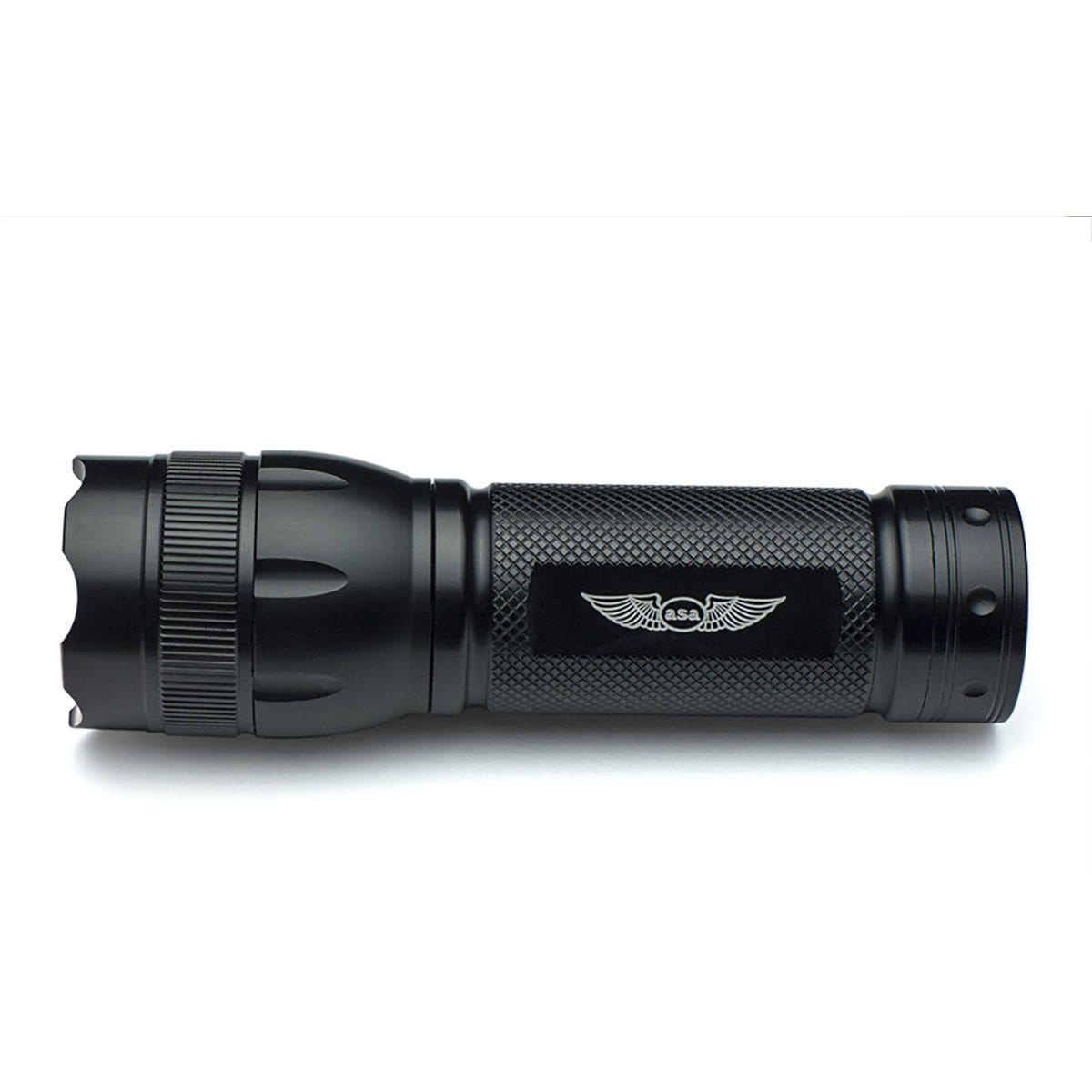Flying is flying, but night flying has its own quirks and considerations that are different from daytime. A little extra planning, training, practice, and provisioning make all the difference. Here are some tricks and tips to help you have a safe, enjoyable experience while flying at night.

1. Do a full preflight
The temptation to skip or skim over steps in the preflight is much higher at night when you are juggling a flashlight along with the ladder and fuel cap. Still, remain disciplined and avoid cutting corners.

2. Familiarize yourself with night flying illusions
Night flying illusions are common and can be deadly if not recognized and compensated for quickly. Learn how to identify and recover from all the tricks your senses can play on you in the dark.

3. Carry several easily accessible flashlights
Multiple lights that can be quickly and easily accessed in the dark are a must in case of an inflight lighting emergency during a night flight. Pack several functional flashlights as well as spare batteries in places you can reach in the dark.

4. Create a plan for fighting pilot fatigue
All other factors being equal, pilots are more likely to get fatigued at night than during the day. Our circadian rhythms dictate that we will naturally get tired once the sun sets. Plan in advance so you will be prepared to fight pilot fatigue and remain alert.

5. Log night time
Like any other skill, the more you fly at night, the more comfortable and competent you will be. Regularly logging night time is also necessary for maintaining FAA currency. For general aviation pilots to maintain currency and be allowed to carry passengers at night, they must have made at least 3 nighttime takeoffs and 3 full stop nighttime landings in the last 90 days.

6. Allow a more generous fuel reserve
When making your fuel calculations, pad your fuel reserve a little more than you may choose to do for a day flight. This gives you ample buffer in case you become disoriented and need to backtrack. It also prevents the need for an extra night landing to refuel.

7. Check your cockpit lights
It is easy to overlook cockpit lighting if you are used to only flying during daylight hours, but when you are preparing your aircraft to fly at night, those cockpit lights are important. Choose the right set of cockpit lights to make sure that you can properly read your instruments.

8. Select a higher cruise altitude
The old adage that “Altitude equals safety” definitely applies here. If you suffer a mechanical emergency and need to land, it will take longer to find a suitable site in the dark than it would during the day. Give yourself time by giving yourself altitude.

9. Add hands-free portable lights
Headlamps, powercaps, and strap-on LED finger lights are just a few of the innovative portable lighting choices you can use to supplement your cockpits lights and flashlights. These all keep your hands free for flying while illuminating whatever you need to see in the cockpit.

10. Plan a route that stays close to airports
Even if you would normally fly direct during the day, for safety reasons, you may wish to plot a course that keeps you as close as possible to airports throughout the duration of your night flight. This provides more dedicated safe emergency landing sites and decreases the potential for you needing to make an unplanned night landing in an unlit remote location.
11. Wear a rescue laser light
Keeping a rescue laser light on you could be a lifesaver if you were forced to make an emergency landing and needed to signal for help or even if you simply needed to locate a reflective object in the dark. These lights can be seen up to 20 miles away at night and up to 3 miles away during the day.
12. Review the FAA’s risk management guide for night flying
The FAA analyzed night flight accidents and compiled a list of the most common accident inducing errors that pilots have made while flying at night. A review of the Practical Risk Management for Night VFR Flying guide can help you to avoid repeating other pilots’ mistakes.
13. Be prepared for any flight to become a night flight
Even if you plan to be back well before dark, planning and packing as though you will return at night is a prudent move. If your return trip is delayed due to weather, mechanical problems, or other factors, you will be prepared.

14. Watch out for icing conditions
While airplane deicing and remaining alert to the potential for icing conditions is always important, ice at night can be even more dangerous than during the day.
In the dark it is harder to see the ice beginning to accumulate, and without the sun to warm and help sublimate a buildup, you could quickly run into trouble. Read Weather Flying to refresh yourself on the hazards and considerations of all kinds of weather concerns including deicing.
15. Confirm destination airport operating hours and availability
If you fly in during the day, you naturally expect the FBO to be open, fuel to be available, the control tower to be staffed, etc. Depending on the size and location of the airport, the same may not be true at night. Confirm all of these details prior to departure to avoid unpleasant surprises.
16. Consider earning your instrument flight rating
Pilots can fly VFR (visual flight rules) at night, but pilots who have IFR (instrument flight rules) training and experience will often find it easier to trust their instruments when flying in the dark because they are already used to it.
17. Know your lighting systems
The first time you come in for a night landing and see the jumble of lights below you, it can be disorienting. Before your flight, review the aircraft, airport, runway, and approach lights that you will see. Practice identifying them and review what each means.
18. Preserve your night vision
Night vision is crucial for seeing objects outside. Guard it by adjusting the brightness of your lights to be as dim as possible while still allowing you to easily read instruments. For portable lighting, consider red filters or lights that have the option to select either red or white.

19. Learn how to activate pilot controlled lighting systems
Non-towered airports or airports that are non-towered during the night may have a pilot-controlled lighting system (PCL). These systems are usually activated by keying your mic multiple times on the CTAF frequency.
The number of times you key up controls the lighting intensity. Since lights turn off automatically fifteen minutes after activation, it is important to time your activation properly so you will have safely landed by the time the lights go out.
20. Watch for blinking lights ahead
Even on a clear night, it can be challenging to see dangers ahead of you. Watch for tell-tale signs like stationary, non-flashing lights starting to blink.
This could mean that there is something between you and those lights. That something could be a cloud or if you have drifted off course, it could be terrain. Remain alert for this valuable indicator of potential trouble.
Check out our large selection of aviation-grade flashlights.
-
Is it safe to fly at night?
Yes, it is safe. Night-flying has a few challenges for a pilot, but uses the same navigation systems as during the daytime.
-
What is considered night flying?
Night-flying is a flight conducted during the hours the FAA recognizes as night time hours. Night time is considered from one hour after sunset to one hour before sunrise.
-
What are the FAA rules for night flying?
If a qualified pilot wishes to carry passengers then every 90 days they will need to make three takeoffs and landings during the nighttime hours to remain legal to fly.
-
Is night flying hard?
Flying at night isn't as difficult as it seems, rather it takes getting used to. It's like driving a car; everything you do in the daytime is the same as what you do at night. It's just an adjustment that pilots grow into with experience.
Did you find this article helpful?
Do you think we missed anything important? Let us know in the comments below!








1 comment
Mya
very helpful! thanks!!